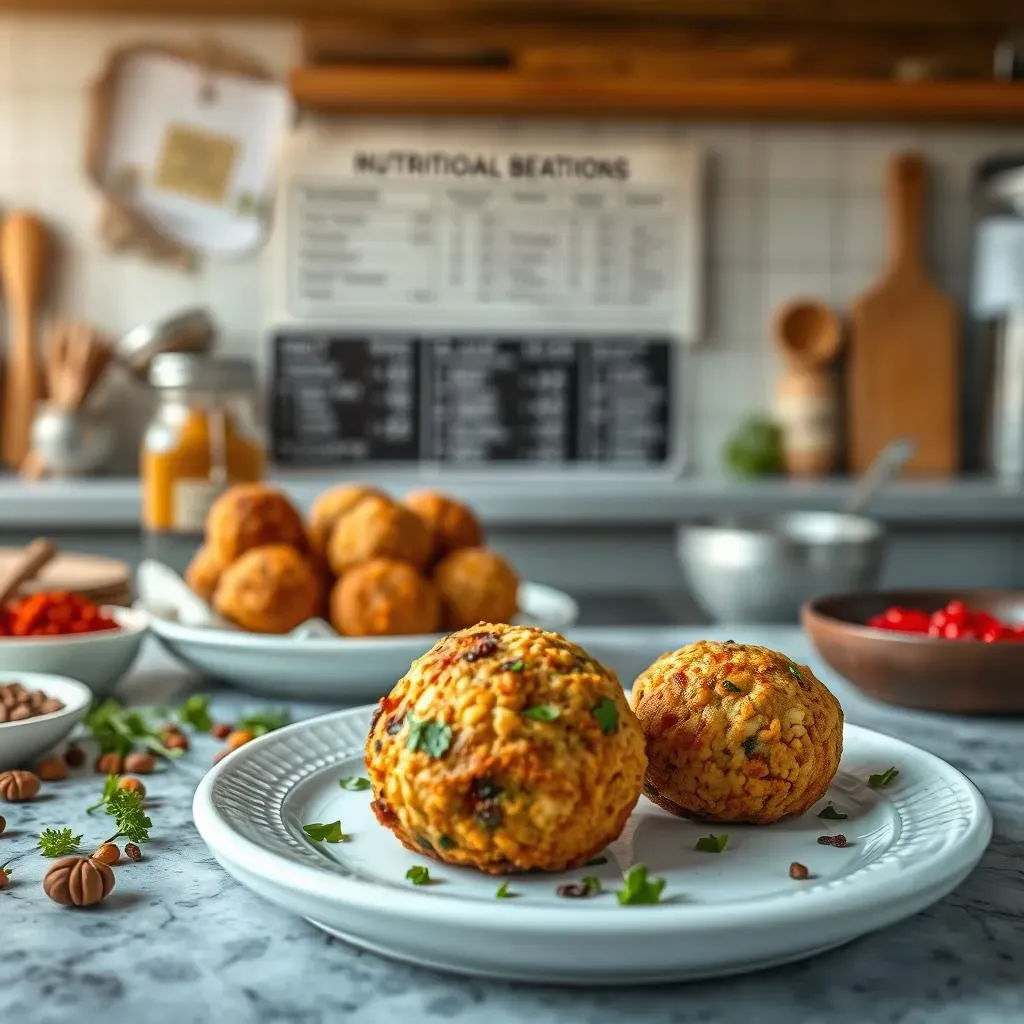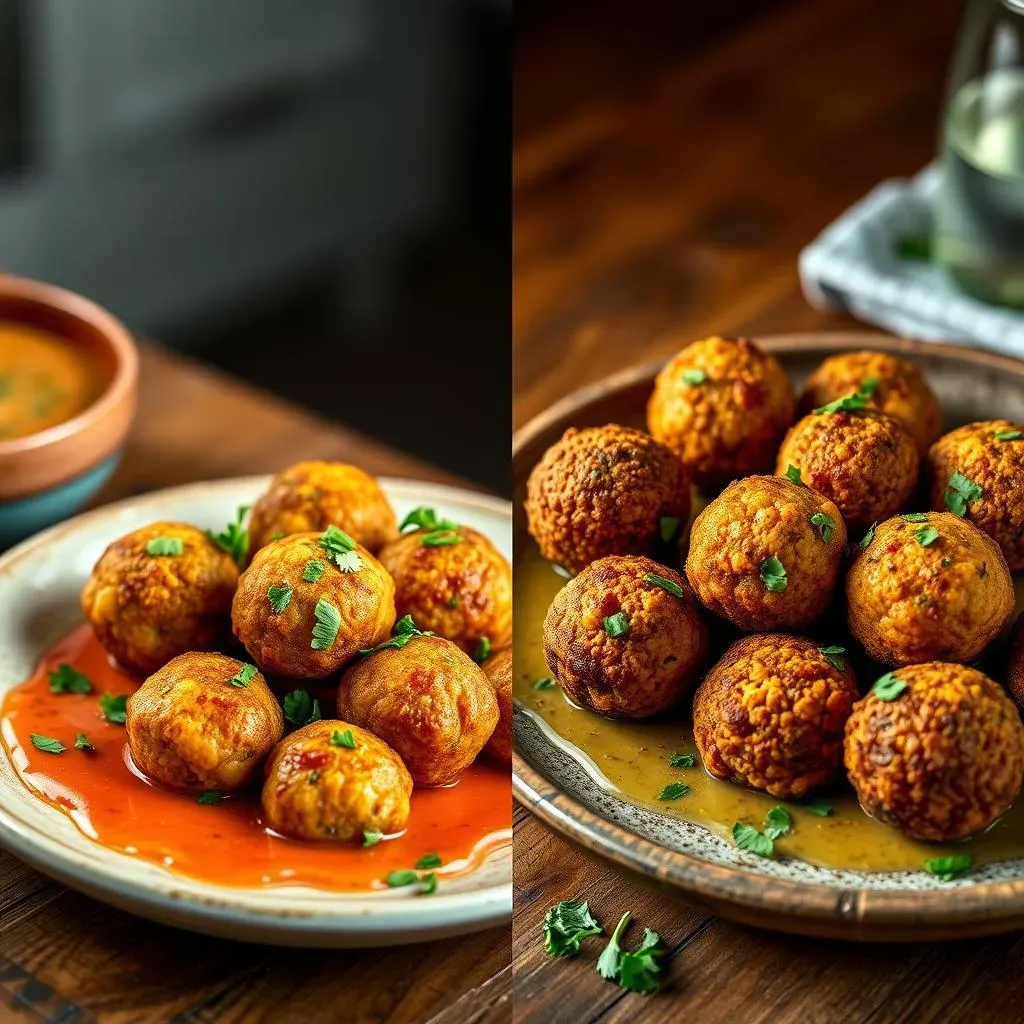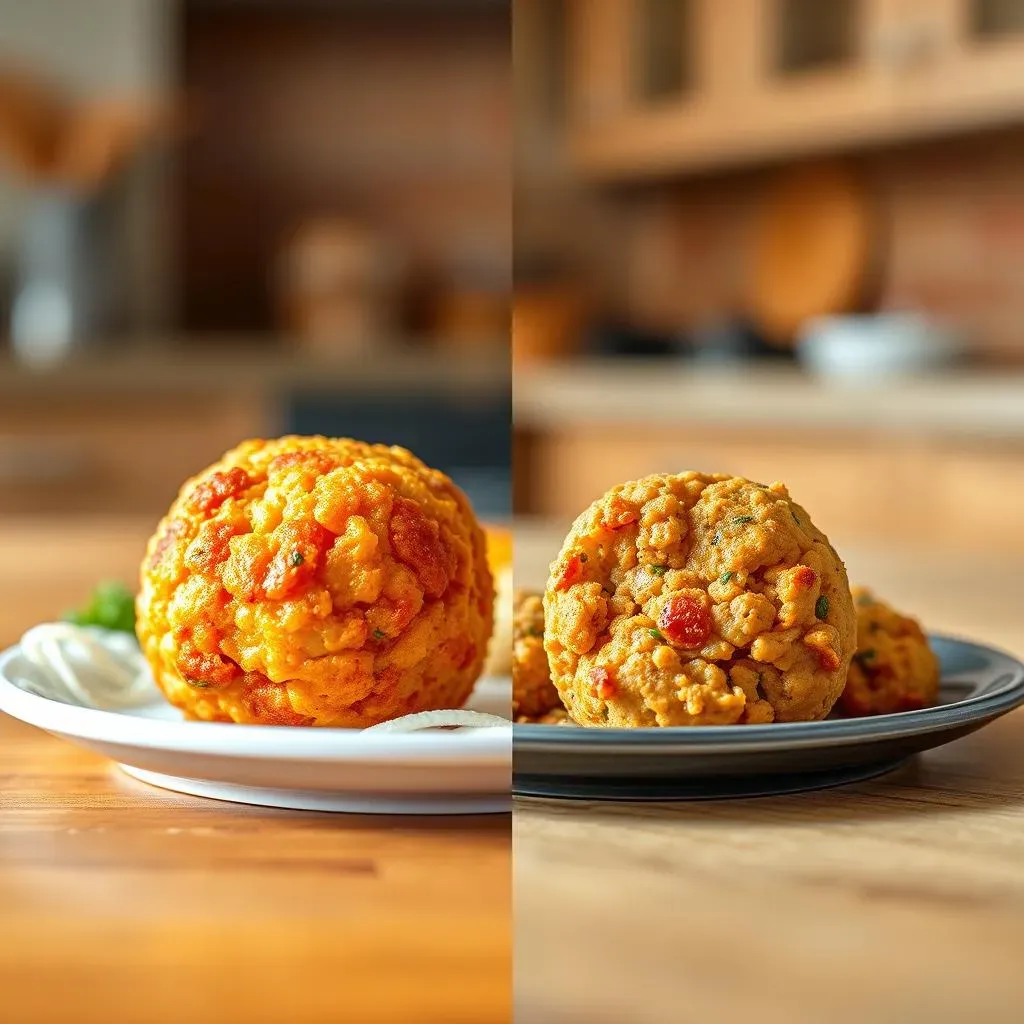Table of Contents
Are you torn between the crispy goodness of fried chickpea balls and the healthier appeal of baked chickpea balls? Look no further! In this article, we'll dive into the ultimate comparison of fried chickpea balls vs baked, exploring the nutritional differences, cooking methods, and benefits of each. Whether you're a health-conscious foodie or a fan of crispy snacks, this guide will walk you through the key considerations to make an informed decision. We'll examine the pros and cons of frying and baking, discuss the impact on texture and flavor, and provide tips for achieving the perfect chickpea ball. By the end of this article, you'll be equipped to decide which method reigns supreme in the battle of fried chickpea balls vs baked. So, let's get started and uncover the truth behind these two popular cooking methods.
Fried Chickpea Balls vs Baked: Nutrition and Taste Comparison

Fried Chickpea Balls vs Baked: Nutrition and Taste Comparison
Nutritional Comparison of Fried and Baked Chickpea Balls
When it comes to nutrition, the difference between fried and baked chickpea balls is significant. Fried chickpea balls are typically high in calories, fat, and sodium, while baked chickpea balls are lower in these nutrients. A 100g serving of fried chickpea balls can contain up to 250 calories, 10g of fat, and 400mg of sodium. In contrast, a 100g serving of baked chickpea balls contains approximately 120 calories, 2g of fat, and 100mg of sodium.
The nutritional disparity between fried and baked chickpea balls is largely due to the cooking method. Frying involves submerging the chickpea balls in hot oil, which increases their fat content. Baking, on the other hand, uses dry heat to cook the chickpea balls, resulting in a lower fat content.
Nutrient | Fried Chickpea Balls (100g) | Baked Chickpea Balls (100g) |
|---|---|---|
Calories | 250 | 120 |
Fat | 10g | 2g |
Sodium | 400mg | 100mg |
Taste Comparison of Fried and Baked Chickpea Balls
The taste of fried and baked chickpea balls also differs significantly. Fried chickpea balls have a crispy exterior and a soft, fluffy interior, while baked chickpea balls are often denser and drier. The flavor of fried chickpea balls is often enhanced by the oil used for frying, while baked chickpea balls may have a more subtle flavor.
According to a food blogger, "The key to making great chickpea balls is to not overprocess the chickpeas. This will help them retain their texture and flavor." This quote highlights the importance of texture and flavor in chickpea balls, whether they are fried or baked.
- Crispy exterior and soft interior (fried)
- Denser and drier texture (baked)
- Flavor enhanced by oil (fried)
- Subtle flavor (baked)
Practical Tips for Making Delicious Fried and Baked Chickpea Balls
To make delicious fried and baked chickpea balls, it's essential to follow some practical tips. For fried chickpea balls, use a thermometer to ensure the oil reaches the correct temperature (around 350°F). For baked chickpea balls, use a food processor to finely chop the chickpeas and mix with spices and herbs.
As a chef notes, "The secret to making great chickpea balls is to experiment with different spices and herbs. Don't be afraid to try new combinations and flavors." This advice encourages readers to be creative and adventurous when making chickpea balls, whether they are fried or baked.
Cooking Methods: Fried Chickpea Balls vs Baked Chickpea Balls

Cooking Methods: Fried Chickpea Balls vs Baked Chickpea Balls
Frying Methods for Fried Chickpea Balls
When it comes to frying chickpea balls, there are several methods to achieve the perfect crispiness. One popular method is deep-frying, which involves submerging the chickpea balls in hot oil. This method requires a thermometer to ensure the oil reaches the correct temperature, around 350°F. Another method is pan-frying, which uses less oil and can be done in a skillet on the stovetop.
According to a cooking expert, "The key to making great fried chickpea balls is to not overcrowd the pot or pan. This will help them cook evenly and prevent them from sticking together." This advice highlights the importance of cooking the chickpea balls in batches and not rushing the process.
Frying Method | Temperature | Cooking Time |
|---|---|---|
Deep-Frying | 350°F | 3-4 minutes |
Pan-Frying | 325°F | 4-5 minutes |
Baking Methods for Baked Chickpea Balls
Baking chickpea balls is a healthier alternative to frying and can be just as delicious. One popular method is oven-baking, which involves placing the chickpea balls on a baking sheet and baking them in a preheated oven. Another method is air-frying, which uses little to no oil and can be done in an air fryer.
As a nutritionist notes, "Baking chickpea balls is a great way to reduce the calorie and fat content of this snack. Simply mix the chickpeas with spices and herbs and bake until crispy." This advice encourages readers to experiment with different seasonings and ingredients to create a unique flavor.
- Oven-Baking: Preheat oven to 400°F, bake for 15-20 minutes
- Air-Frying: Preheat air fryer to 375°F, cook for 10-12 minutes
- Grilling: Preheat grill to medium-high heat, cook for 5-7 minutes per side
Benefits and Drawbacks of Fried Chickpea Balls vs Baked Chickpea Balls

Benefits and Drawbacks of Fried Chickpea Balls vs Baked Chickpea Balls
Benefits of Fried Chickpea Balls
Fried chickpea balls have several benefits that make them a popular choice. They have a crispy exterior and a soft interior, which makes them a satisfying snack. Additionally, fried chickpea balls can be flavored with a variety of seasonings and spices, which can enhance their taste. However, it's essential to note that fried chickpea balls are high in calories and fat, which can be a drawback for health-conscious individuals.
As a food expert notes, "Fried chickpea balls are a great option for those who want a crunchy snack. However, it's crucial to balance the calorie and fat content with a healthy diet and regular exercise." This advice highlights the importance of moderation when consuming fried foods.
Benefits | Fried Chickpea Balls | Baked Chickpea Balls |
|---|---|---|
Crispy Exterior | Yes | No |
Soft Interior | Yes | Yes |
Flavor Options | Yes | Yes |
Drawbacks of Fried Chickpea Balls
While fried chickpea balls have several benefits, they also have some drawbacks. They are high in calories and fat, which can contribute to weight gain and other health problems. Additionally, fried chickpea balls can be messy to eat and may require additional sauces or dips to enhance their flavor. On the other hand, baked chickpea balls are a healthier alternative, with fewer calories and less fat. However, they may lack the crispy exterior and flavor of fried chickpea balls.
According to a nutritionist, "Baked chickpea balls are a great option for those who want a healthier snack. They can be seasoned with herbs and spices to enhance their flavor, and they are lower in calories and fat than fried chickpea balls." This advice encourages readers to consider the nutritional benefits of baked chickpea balls.
- High in Calories and Fat (Fried)
- Lower in Calories and Fat (Baked)
- Crispy Exterior (Fried)
- Softer Exterior (Baked)
Conclusion: Making the Right Choice Between Fried Chickpea Balls vs Baked
In conclusion, the debate between fried chickpea balls vs baked ultimately comes down to personal preference, dietary needs, and cooking goals. While fried chickpea balls offer a crispy exterior and satisfying crunch, baked chickpea balls provide a healthier alternative with less oil and calories. By considering the nutritional differences, cooking methods, and benefits of each, you can make an informed decision that suits your lifestyle and taste buds. Whether you choose to fry or bake, the key to perfect chickpea balls lies in using high-quality ingredients, following proper cooking techniques, and experimenting with creative seasonings and flavors. So, go ahead and give both methods a try – your taste buds and health will thank you!